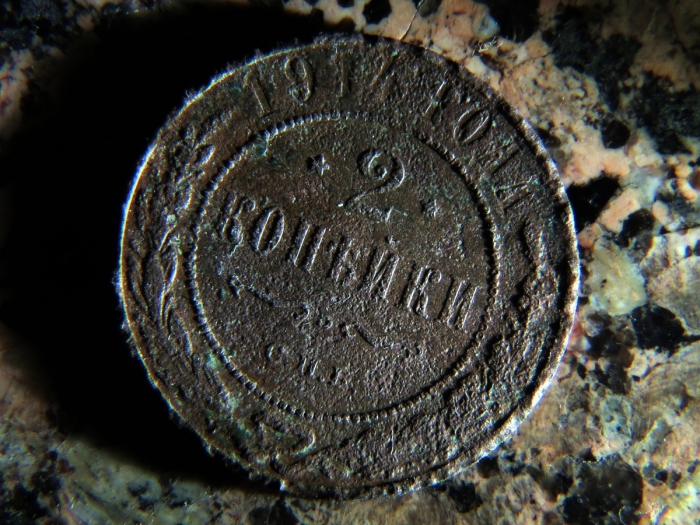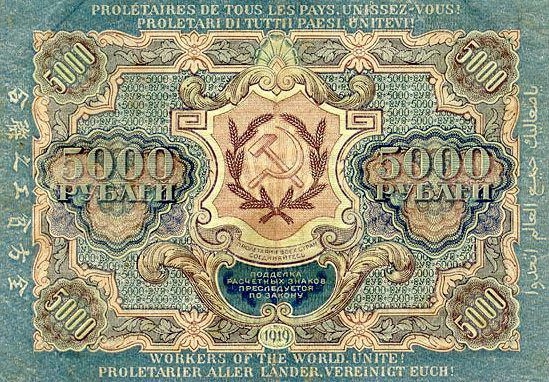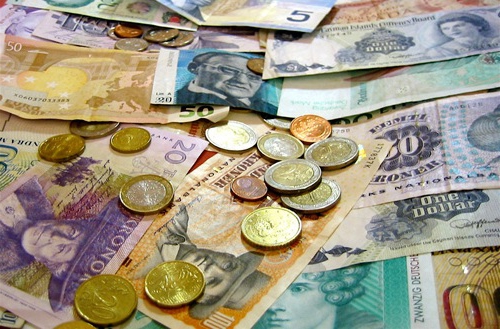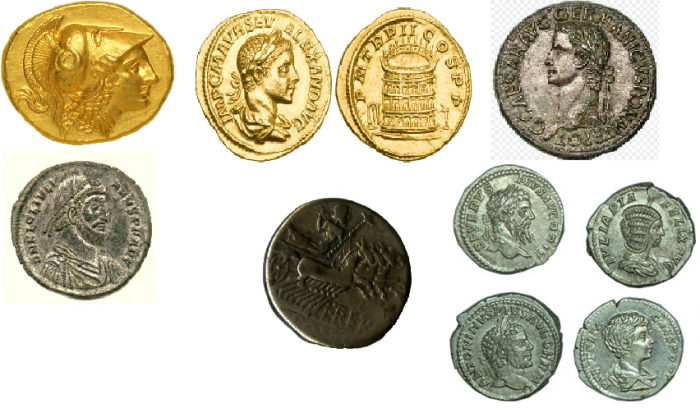Money arose as a result of a very long, or rather, millennium-long practice of trade and the corresponding exchange of products. Throughout the entire existence of mankind, more than one hundred types of money have been tried, until the most profitable and convenient option for their presentation, namely metal, has been found.
The history of money in Russia
Coin circulation in Kievan Rus dates back to the 9th-10th centuries, and the rapid development of their coinage began after the process of creating a centralized Russian state, namely in the 15th century. Somewhat later appeared paper money, which were first made by the Chinese. Their detailed description became known thanks to the famous Italian traveler named Marco Polo, who visited China at the end of the 13th century.

Russian money, the history of the issue of which goes back to the distant times of the reign of Catherine II, more precisely in 1769, was called bank notes. They more acted as bank obligations, in particular receipts, ensuring the receipt of coins.
Money paper was first produced at the Krasnoselskaya manufactory, and later at Tsarskoye Selo. Even then, watermarks were present on it. Printing of notes was made in the Senate printing house.
What were the first banknotes?
The history of money in Russia in the aforementioned period indicates that their quality was below average due to poor paper and inadequate printing performance (the image that needed to be printed consisted mainly of numbering and text). This entailed a number of fakes. A significant amount of counterfeit bills made Napoleon II on a specially brought machine during the invasion of Russian lands.
The history of money from 1814-1815 recorded a sharp depreciation of the Russian paper ruble: it was equal to 20 kopecks. In this regard, the Minister of Finance of that time D. Guryev submitted an official report to Alexander I indicating the need to immediately replace the existing bank notes and form a special institution that produces paper money.
Having received approval from the emperor, the Minister of Finance turned to Lieutenant General A.A. Betancourt for a discussion of the conditions and methods for making the latest banknotes. The latter, in turn, developed a project to organize the newly introduced paper-making and, accordingly, printing production, which was then called the “Expedition for the procurement of government securities”. Since its inception, the production of full-fledged high-quality paper money has begun.
How were the new banknotes protected?
The history of money (in this case, paper money) reveals the facts of their manufacture by the Expedition in 1818-1819 according to the developed samples of Khovansky and Betankur. Banknotes in denominations of 5, 10, 25, 50 and 100 rubles were issued. The main barrier to fake were watermarks that reproduce portraits and paintings of famous Russian artists.
A special text was displayed on each side of the banknotes, for example, “State Banking Banking of Europe”. These drawings were performed by engravers. To complicate the image and significantly improve the quality of banknotes, the Expedition invited exclusively talented craftsmen and artists such as G. Scamoni, J. Reichel, A. Sauerweid. Gradually involved new technologies and machines.
What money was in the USSR?
Russian money, the history of which describes the Soviet era, was mainly the result of the so-called local financial creativity, namely, various kinds of real money surrogates issued by local authorities. This was due to the fact that the Civil War made it very difficult or even impossible to deliver them from the center of the country to its outskirts.

This was carried out either with the approval of the government of the RSFSR, or arbitrarily. Of course, such money was of very low quality, but it was a necessary link that provided the economic side of life on the outskirts of the country. The government of the RSFSR authorized the process of temporary issuance of banknotes in the Urals, Central Asia and Siberia.
In areas that were invaded by interventionists and White Guards, local money also appeared, the distinguishing characteristics of which were illustrations of historical monuments of Russia. For example, the well-known Bronze Horseman was depicted on Yudenich's banknotes, on the Denikin banknotes - the building of the Petrograd Admiralty and the Moscow Kremlin, on the Wrangel banknotes - the monument “The Millennium of Russia” in Novgorod.
The essence of monetary reform
At the end of the Civil War, there was already a significant amount of money and corresponding surrogates in circulation. The current situation dictated the need for an urgent increase in the ruble exchange rate, for which a monetary reform was carried out, as a result of which bank notes were issued, in particular, chervonets. They were assigned a gold content. So, one chervonets was equivalent to a ten-ruble gold coin with pre-revolutionary coinage. Quarterly tickets were backed up with gold, and three-quarter tickets with easy-to-sell bills and goods.
Thus, Russian money, the history of which dates back more than one hundred years, for the first time after the end of the October Revolution, acquired the form of a hard currency, which was made by the chervonets. However, at the same time, impaired Soviet money.
What task did the government set for the State Sign at that time?
The history of money of that era reveals facts regarding the government’s order to create fundamentally new banknotes, which should include images of ordinary people of the Soviet era: workers, peasants, Red Army soldiers. Their portraits were commissioned by the famous sculptor I. Shadr. He created, and the artists of the Gosznak embodied in the engraving the required images of such representatives of the Soviet Union as a sower, a worker, a blacksmith hammer and a Red Army soldier, which were subsequently reproduced by millions of copies of completely new brands and banknotes. A significant contribution to this process was made by the artist I. I. Dubasov. Since 1961, the idea of embodying the greatness of the USSR was canonized by transmitting the image of V.I. Lenin, whose portrait became a permanent element of the graphic on banknotes. Thus, it is already becoming clear that the history of the development of money in Russia is of a staged nature.
Where did the considered calculation tools come from in the world?
As mentioned earlier, the history of money (in particular metal) begins in China, approximately in the 7th century BC. e. Paper bills spread later, namely in the VIII century BC. e.
Their prototype were special receipts, which were either issued on the security of valuables deposited in specially organized shops for this, or testified to the taxes paid, which were on the corresponding accounts, which were placed in the centers of each province.

In the XIII century, Genghis Khan freely exchanged paper money for gold, as a result of which their counterfeiting brought substantial income, but it was considered a very serious crime. And by 1500, the Chinese government was forced to stop issuing banknotes, due to the attendant difficulties associated with their excessive issuance and high inflation.However, Chinese private banks that already existed at that time continued to issue paper notes.
What used to be a means of circulation and savings, as well as a measure of value?
The history of the emergence of money indicates that in different eras and in different parts of the globe, feathers, shells, metal ingots, livestock, cocoa beans, etc. were valuable means of exchange. In the USA, the 18th century was marked by that in the states, the role of banknotes was played by the wampums, that is, the necklaces of the Indians, as well as receipts demonstrating the qualitative and numerical component of tobacco or animal skins.
The history of the development of money around the world
An approximate chronology of the appearance of banknotes:
- About 3–2 thousand years BC, the first “banks” appear in Mesopotamia. They were palaces and temples of local rulers. It provided services regarding safe storage of goods.
- Around 2250 BC e. the rulers of Cappadocia (today the territory of Turkey) for the first time began to provide guarantees of quality and weight of gold and silver bullion, acting as money.
- Around 1200 BC, a Chinese character appeared, interpreted as “money”. They designated kauri shells, which acted as a universal means of payment.
- About 1000-500 BC, prototypes of money arose in China, in particular pieces of metal in the form of shovels, knives or hoes, which were previously used as a means of exchange.
- Around 640-630 BC e. in Lydia money was invented, already close to modern. The coins were round in shape and consisted of an electron, an alloy of gold and silver. Around the same time, minting of iron coins began in China.
- In 500 BC Spartan legislator Lycurgus banned the circulation of silver and gold coins. This was done in order to limit the activities of foreign traders. Large and heavy coins were made that could not be converted.
- The year 910 was marked by the massive release of paper money in China.
- The year 1156 was marked by the first official contract regarding currency exchange rates concluded between Genoese merchants and Byzantium.
- In the 12th century, a large number of private banking houses opened in northern Italy.
- In 1440, Johannes Guttenberg created a printing press for books. But they began to use it for printing paper money.
- 1649 was famous for the fact that English, French and Dutch banks issued checks similar to modern ones.
- In 1661, the Bank of Sweden was opened - the first state central financial organization in the world.
- In 1824, a banking clearing system arose in the United States. Here are the main points that characterize the history of money in the world.

What is credit money?
They are called IOY-money, which translates as "I owe you money." This is a debt obligation of either the Central Bank or a private economic entity. The history of credit money comes down to their occurrence in three paper forms, namely:
- bill of exchange;
- bank note;
- check.
They become a means of accumulation due to the withdrawal of gold from circulation and the termination of the exchange of banknotes for it.
